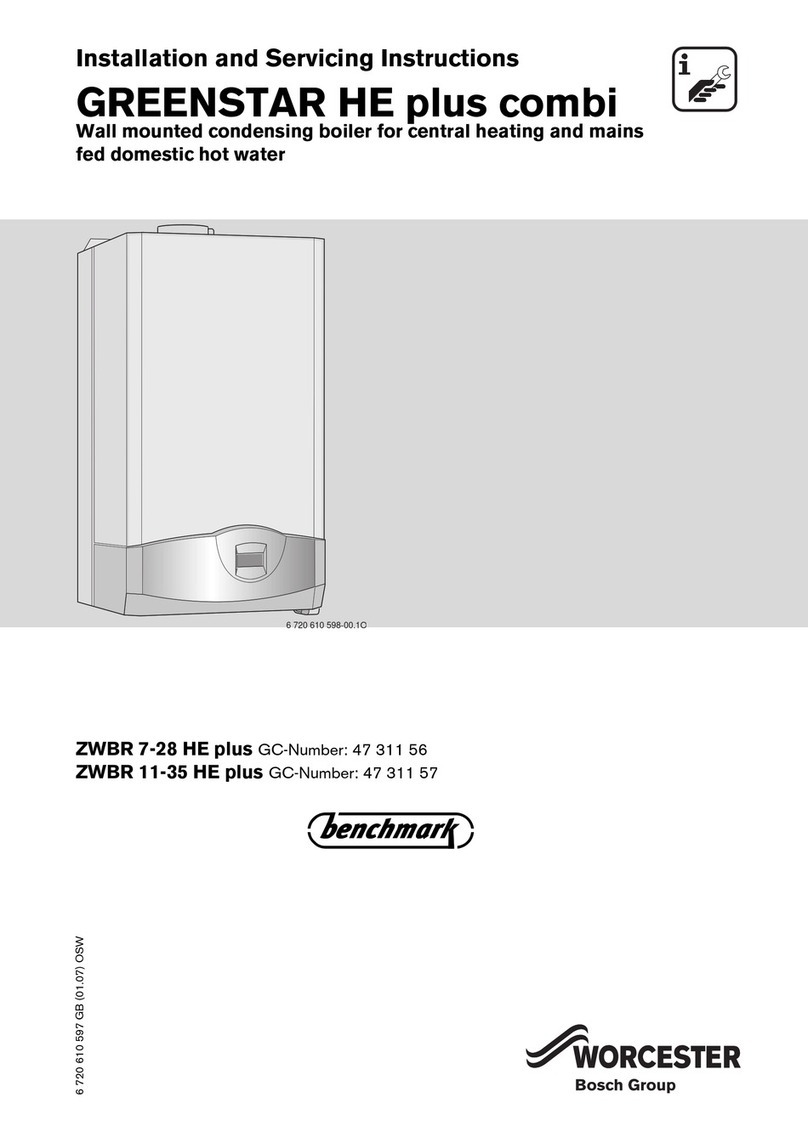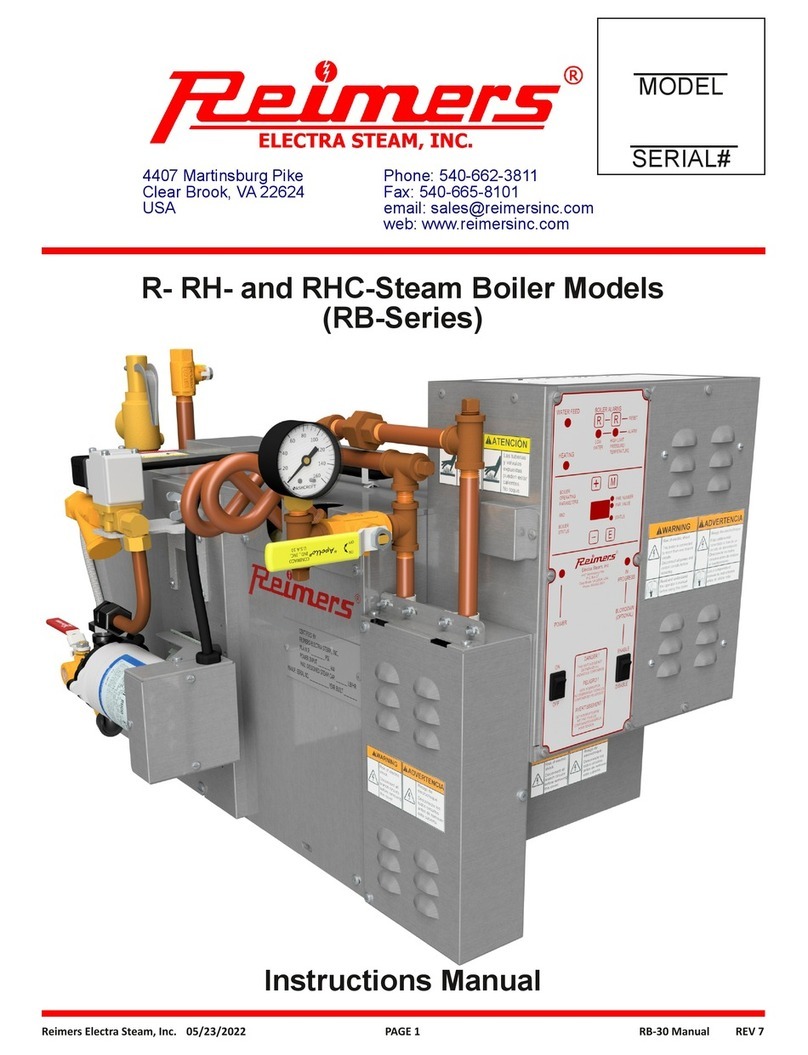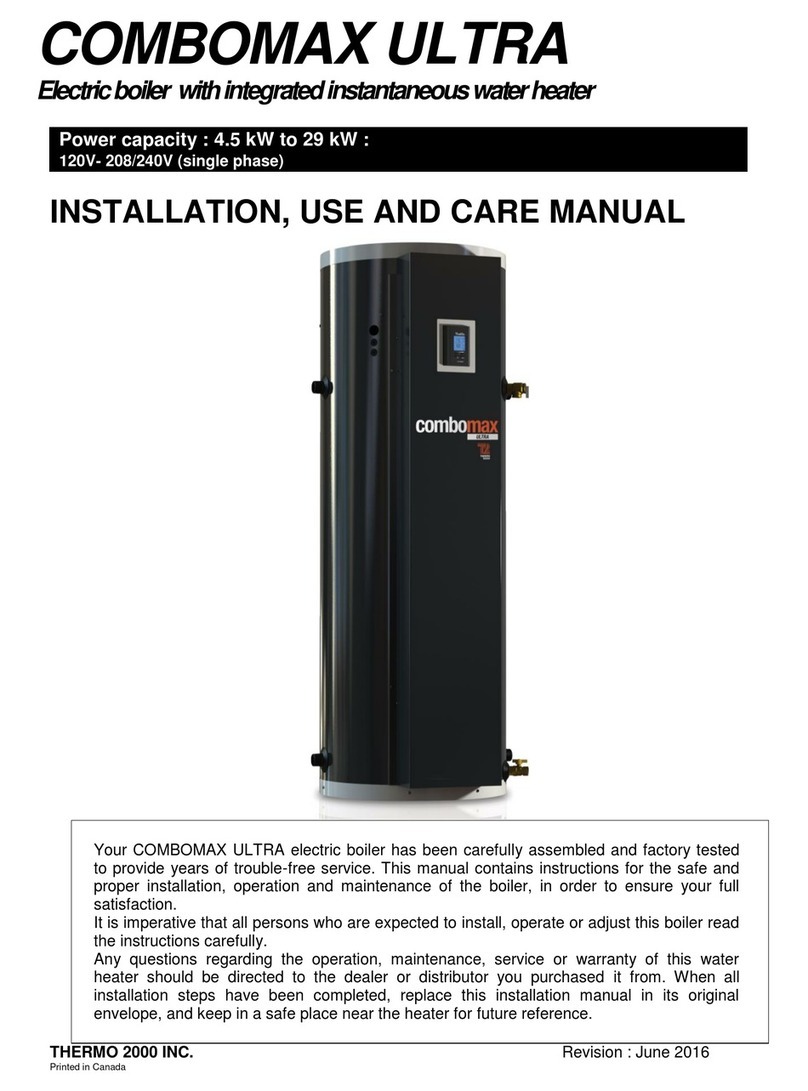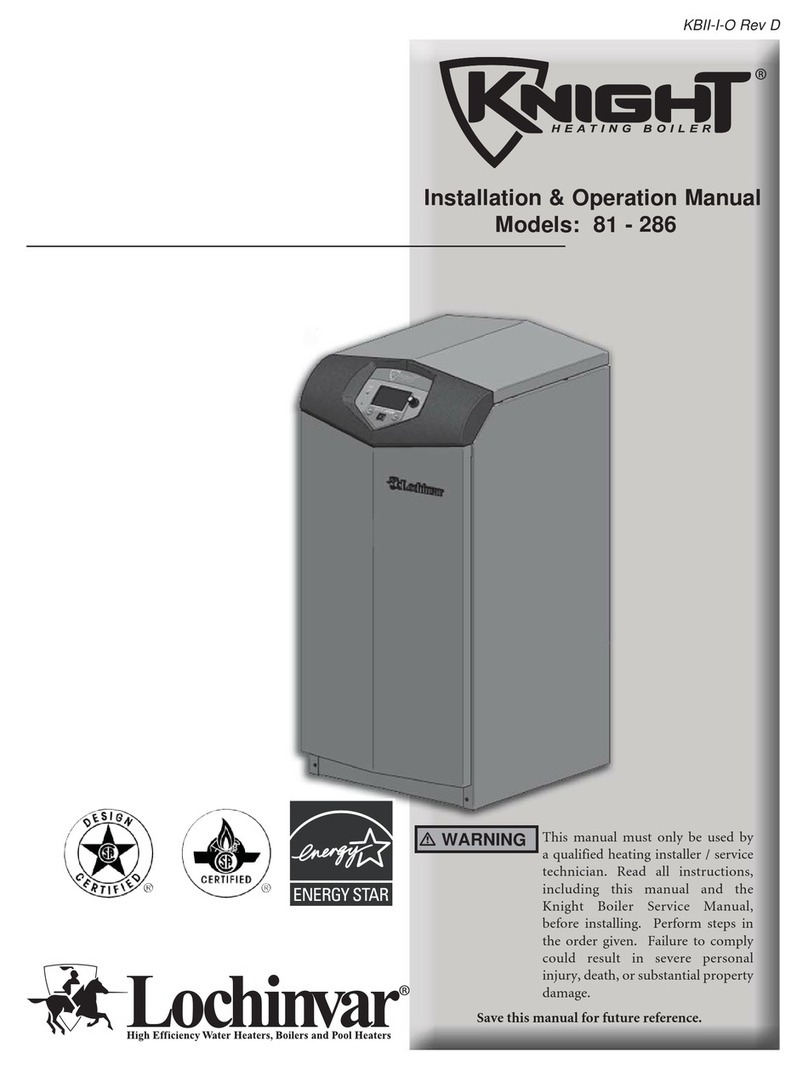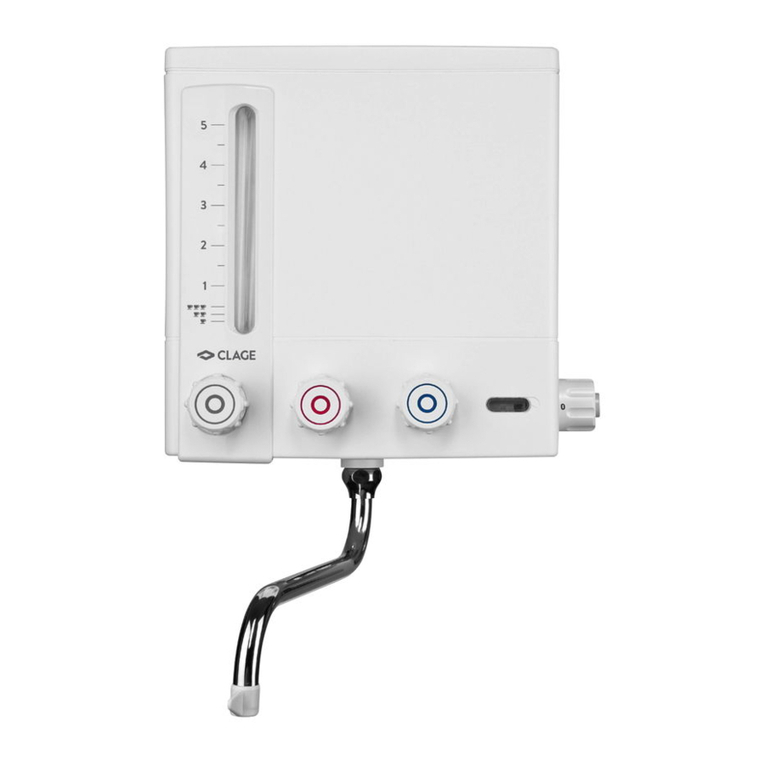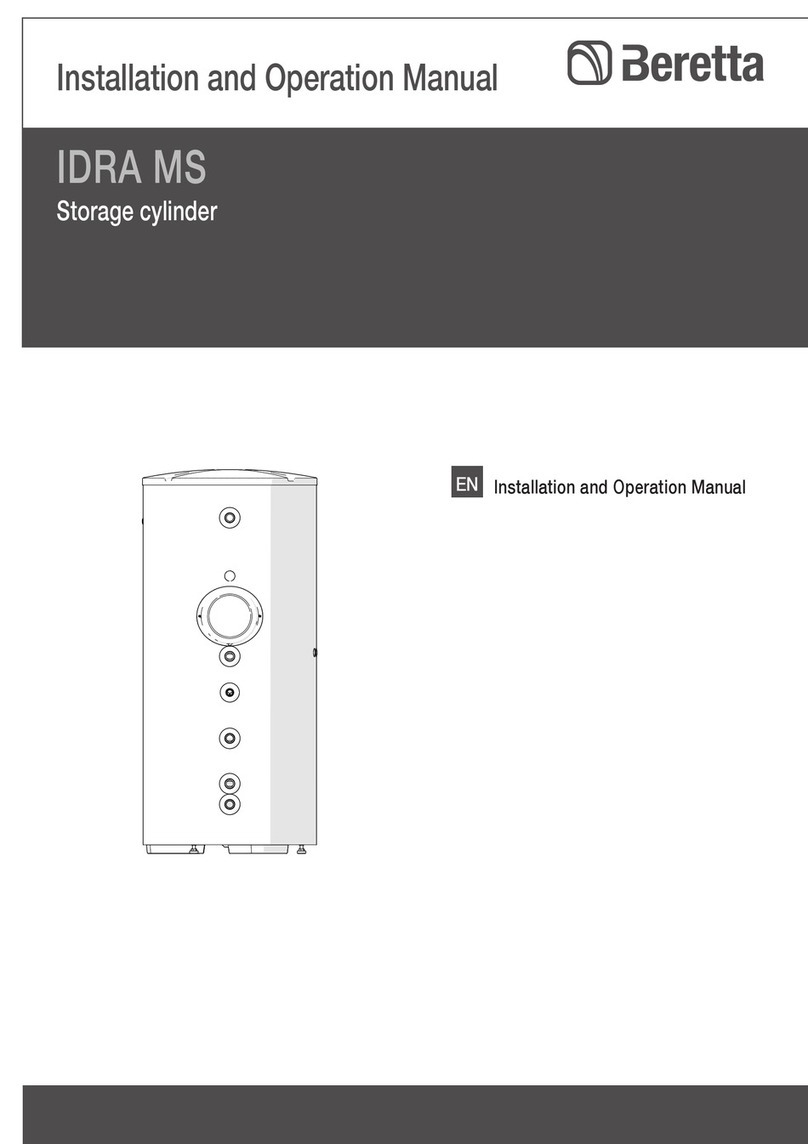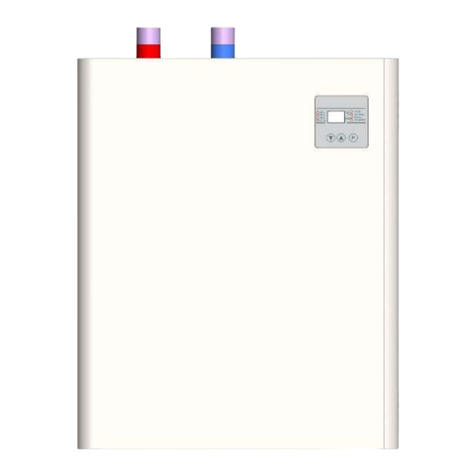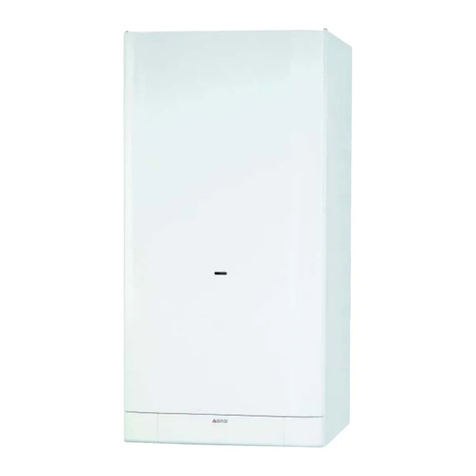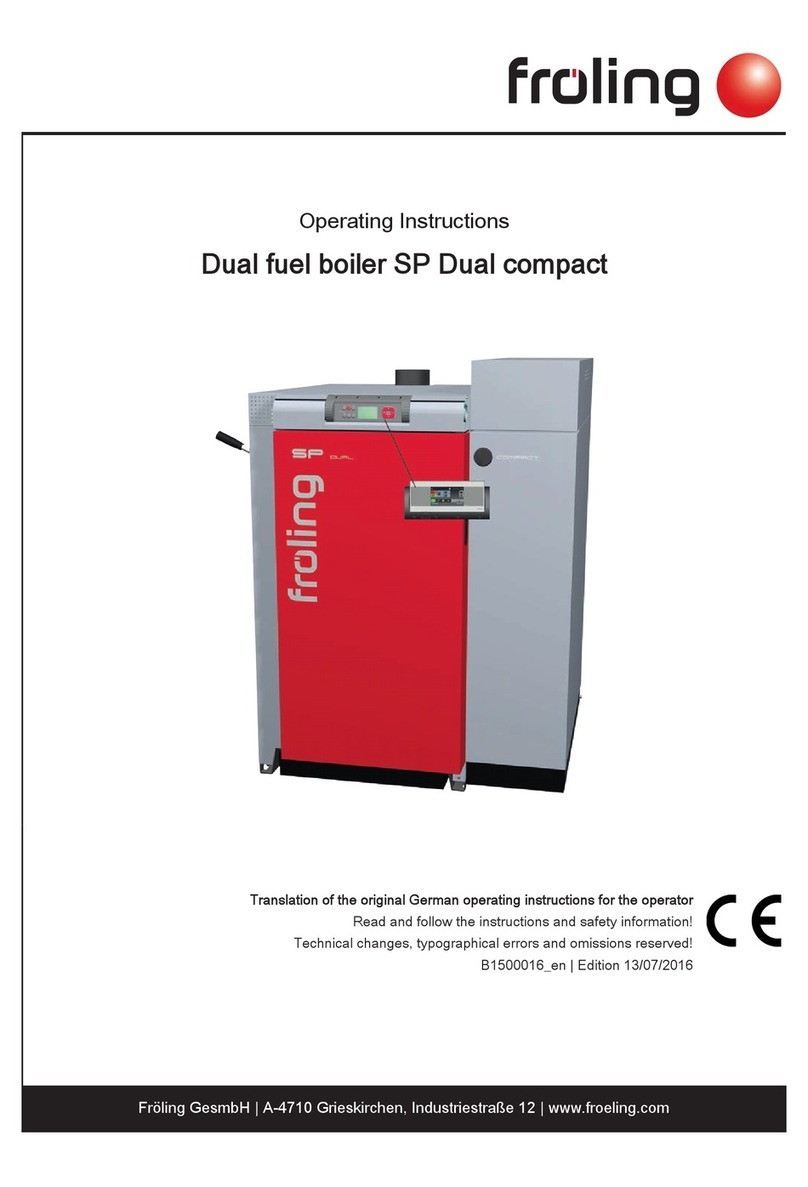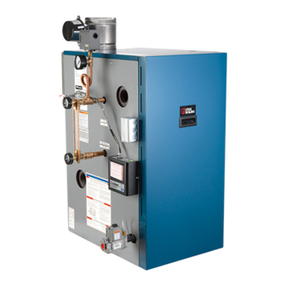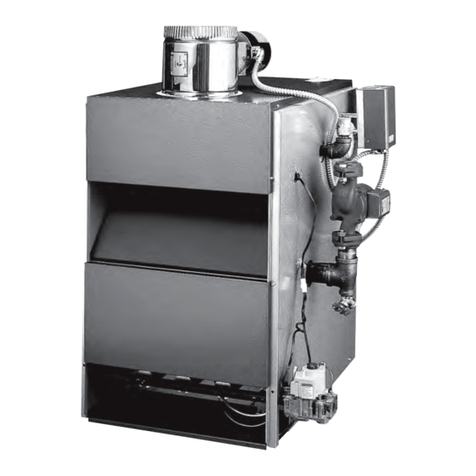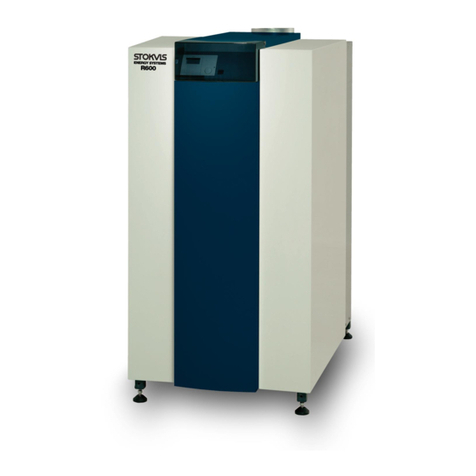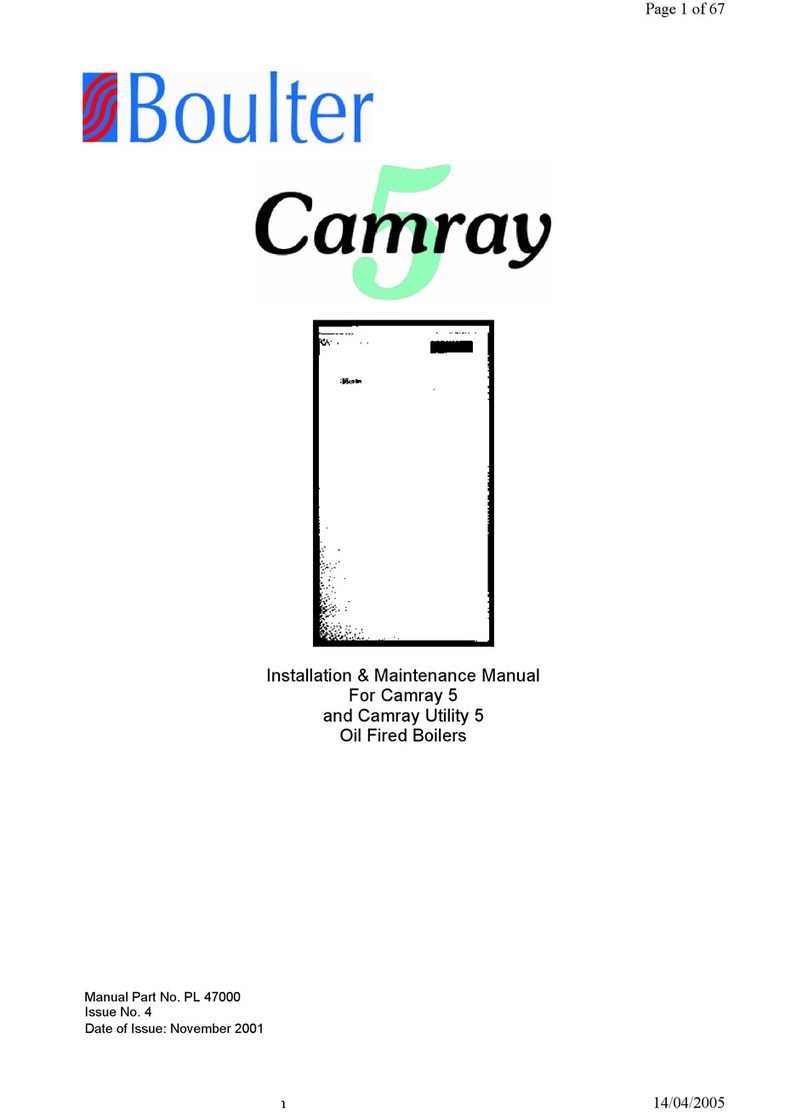BOULTER BOILERS Eco-System PAGE 12
4:7 OIL STORAGE
4:7.1 Oil Tank
Consideration to the access by fuel delivery lorries
should be given when positioning the oil tank.
Tank positioning should be in accordance with BS
5410 Part 1 and OFTEC Technical Book 3.
In the interest of most economical deliveries the Oil
Tank should be of 3,000 litres (600 gallons)
capacity.
It should be complete with the following:
1. Sludge Cock - on steel tanks.
2. Outlet Valve.
3. Contents Indicator.
4. Screw fill connection and independent vent. The
Fill and Vent should be suitably capped to prevent
ingress of water or fitted with return bends.
4:7.2 Steel Tanks
Tanks should be mounted on suitable supports, if
these are of brick or blocks, a damp proof
membrane should be inserted between the tank
and its supports.
Tanks should slope 20mm per 1m of length
downwards from the Oil Outlet to the Sludge Cock
situated at the opposite end.
4:7.3 Plastic Oil Tanks
Tanks made from plastic are now available. These
should be UV stabilised for protection against
sunlight, and coloured green. Plastic tanks do not
need to stand on piers, but should be supported
across the entire base area, ideally on 50mm thick
garden slabs or a concrete base. As there is only
one tapped outlet they are more suited to single
pipe feed as gravity supply or with a Boulter 3K Oil
Loop Deaerator where suction lift is required. (Part
No. BS 03060)
4:8 OIL SUPPLY
The oil entry holes in the boiler casing are shown
in the diagram in Section 3:5 of this manual.
Flexible Hoses supplied with the Boiler MUST NOT
pass through these holes.
All joints in the Oil Lines must be oil tight and the
Oil Line should be flushed clean before connecting
to the burner.
Note that no soldered joints are permissible in the
oil line.
4:8.1 Oil Filter
An Oil Filter is supplied with the Boiler.
Connections are 1/4 BSP Female, see fig. 4:8c.
It is essential for reliable operation that the Oil
Filter is fitted in the Oil Pipe supplying Oil from
the Tank to the Burner. It should be fitted as
close to the Boiler as practicable, but NOT
inside the Boiler casing.
It is a condition of the guarantees that the Filter
is fitted correctly.
4:8.2 Fire Check Valve (Not Supplied)
A Remote acting FIRE VALVE* must be fitted in the
suction line at the time of installation - see BS
5410: Part 1.
The valve must be fitted external to the Boiler,
preferably at point where the Oil Pipe enters the
building. The sensor should be located above the
Burner in the clip provided, see figs. 4:8b, 4:8d
& 4:8f.
The entry point for the Fire Valve Sensor should be
through any of the 20mm ET knockouts located at
the top of the rear casing, or side panels.
To prevent damage to the capillary always pass the
sensor through the blind grommet (supplied), it will
be necessary to cut across the diaphragm.
*Remote Acting Fire Valves are available from
Boulter, through your merchant or installer e.g.
Ref: Operating Capillary
Temperature Length
RAF9015C 90oC 1.5m
RAF9030C 90oC 3.0m
RAF9060C 90oC 6.0m
RAF9090C 90oC 9.0m
4:8.3 Single Pipe System
Fig. 4:8b
If the bottom of the Oil Tank is above the oil Burner,
install a 10mm copper supply pipe to the Burner
incorporating the correct Filter, Shut Off Valve and
Fire Check Valve.
Ensure that the Burner Oil Pump is correctly set for
‘Single Pipe’ operation. (See 4:9.2).
4:8.4 Two Pipe System
Fig. 4:8d
When the bottom of the Oil Tank is below the level
of the Oil Pump on the Burner it is necessary to
install an additional 10mm return pipe.
The Oil Filter, Shut Off Valve, spring loaded Non-
Return Valve and Fire Check Valve are always in
the suction line supplying oil from the Tank to the
Burner.
The Non-Return Valve must be fitted to allow the




















